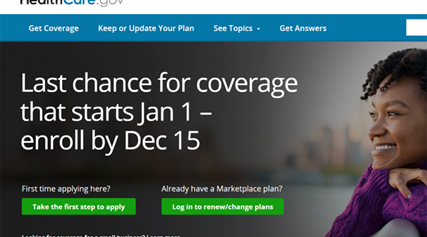MM Curator summary
The article below has been highlighted and summarized by our research team. It is provided here for member convenience as part of our Curator service.
[MM Curator Summary]: We are still hovering around 12M duallies, but what they need and get has changed a bit since the last time a big report was done.
For dually-eligible individuals, Medicare is their primary insurer and mainly pays for medical services, such as hospital and post-acute care. Medicaid wraps around this coverage, providing varying levels of assistance with Medicare costs and paying for services Medicare does not, such as long-term services and supports (LTSS).
While nearly all Medicare-Medicaid enrollees have low incomes and modest savings, they are a diverse group with respect to age and health status. Most are over 65, but many are not. Some are relatively healthy, and others have significant impairments. A Kaiser Family Foundation (KFF) brief examines these and other enrollee characteristics with several key takeaways:
- In 2020, 87% of Medicare-Medicaid enrollees (and 20% of Medicare-only enrollees) had incomes of $20,000 or less.
- Almost 40% of dually-eligible individuals were under age 65 and qualified for Medicare due to disability, compared to 8% of non-dual Medicare enrollees.
- Nearly half (49%) were people of color, compared to less than 20% of non-dual Medicare beneficiaries.
- More than four in 10 Medicare-Medicaid enrollees (44%) were in fair or poor health, compared to 17% of Medicare-only beneficiaries.
- Nearly half (48%) had at least one limitation in activities of daily living (ADLs) compared to 23% of non-dual Medicare enrollees.
An updated data book from the Medicaid and CHIP Payment and Access Commission (MACPAC) and the Medicare Payment Advisory Commission (MedPAC) presents similar personal information. It also highlights trends in enrollment, costs, and utilization among Medicare-Medicaid enrollees. The findings include the following:
- More dually-eligible beneficiaries are enrolling in Medicare Advantage (MA). The share of those in Original Medicare declined by 7.7% between 2018 and 2020, while the share enrolled in MA increased by 8.6%. Medicare-Medicaid enrollees are more likely to be in an MA plan than their non-dual counterparts (41% vs. 35%).
- Dually eligible individuals used certain Medicare-covered services more than Medicare-only enrollees; their per-person Medicare spending was also higher. From 2018 to 2020, Medicare spending on dually eligible individuals increased for skilled nursing facility services (11%), inpatient hospital services (7.6%), home health (5.4%), and Part D drugs (5.8%). Among non-dually eligible Medicare enrollees, spending increased by 5.8%, 6.5%, and less than .1%, respectively.
- The use of Medicaid-covered institutional LTSS was associated with disproportionately high Medicare and Medicaid spending. Users of institutional LTSS made up 17% of dually-eligible beneficiaries but accounted for 31% of Medicare spending and 39% of Medicaid spending on this population. They had the highest Medicare and Medicaid spending compared with users of other types of Medicaid LTSS.
- Over the last two decades, federal and state efforts have focused on shifting LTSS use from institutional settings toward home- and community-based services (HCBS). In 2020, the share of dually-eligible beneficiaries who used HCBS LTSS was larger than the share who used institutional LTSS (27% vs. 17%), and HCBS accounted for a greater share of Medicaid spending than institutional LTSS (44% vs. 39%).
Together, the reports underscore the opportunities and challenges to improving outcomes and systems for Medicare-Medicaid enrollees. Policymakers have long expressed interest in doing so, in part because dually-eligible beneficiaries account for relatively large portions of program expenditures. In 2020, they comprised 17% of the Medicare population and 33% of total spending. They similarly accounted for 14% of all Medicaid enrollees and 32% of Medicaid spending. Concerns have also been raised as to how the separate programs create barriers to care coordination and the extent to which this increases costs and worsens health.
Medicare Rights supports thoughtful innovations and urges that any potential solutions be carefully considered. As KFF notes, dually-eligible enrollees have distinct needs and circumstances. They have lower incomes, are more racially and ethnically diverse, and are more likely to be in poor health than Medicare-only enrollees. But while many live with serious physical and mental health challenges, nearly one in four say they are in “excellent” or “very good” health, and more than half have no functional limitations. This heterogeneity makes it critical that reforms are targeted enough to meaningfully strengthen program integration and flexible enough to meet the full range of enrollee needs.
Read the KFF brief, A Profile of Medicare-Medicaid Enrollees.
Read the MACPAC and MedPAC data book, Beneficiaries Dually Eligible for Medicare and Medicaid.

